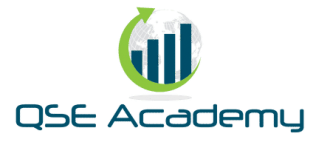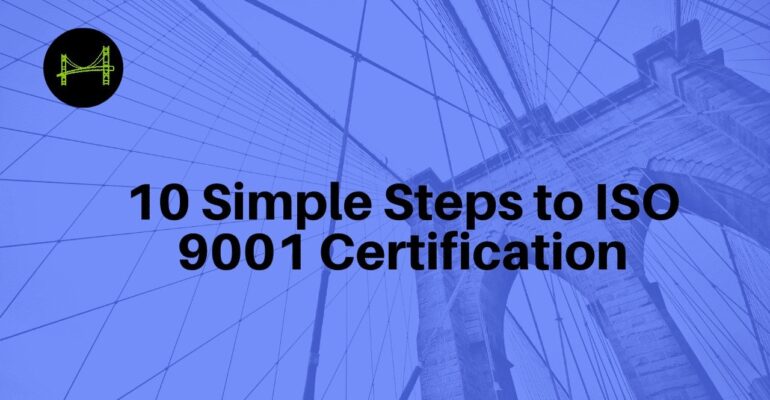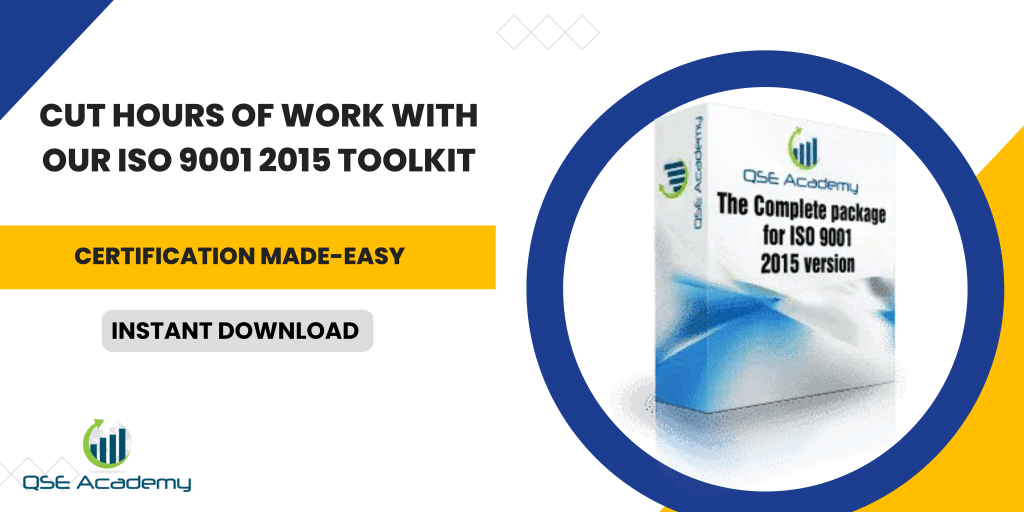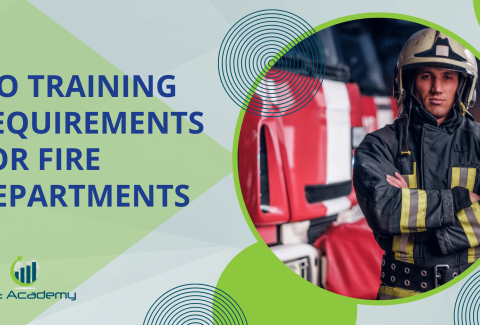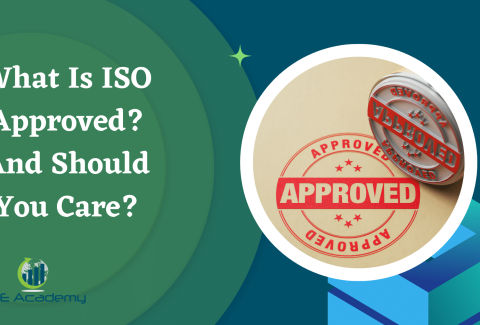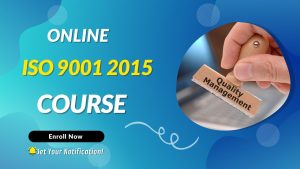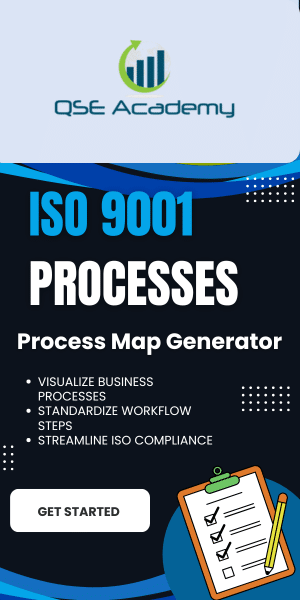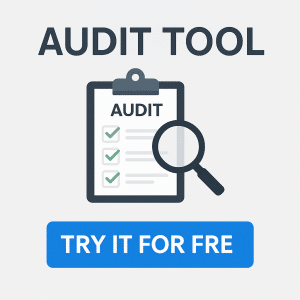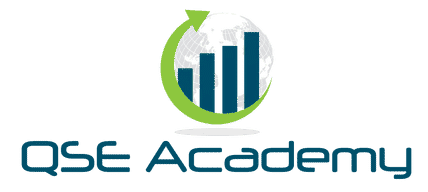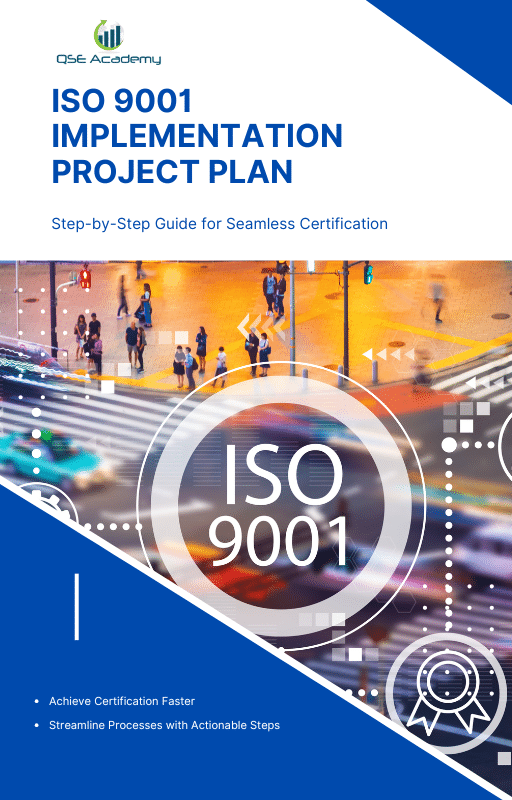10 Simple Steps to ISO 9001 Certification
Last Updated on October 13, 2025 by Hafsa J.
10 Simple Steps to ISO 9001 Certification
Getting ISO 9001 certified can feel like a black box. I’ve worked with companies that delayed the process for years—not because they weren’t capable, but because no one ever explained the steps clearly.
Over the past decade, I’ve helped more than 100 businesses implement ISO 9001 from scratch. And here’s what I’ve noticed: the ones who succeed don’t overcomplicate it. They follow a simple, structured path—and they stick to it.
That’s exactly what this article gives you.
You’ll get the 10-step roadmap I use with clients to go from “we need ISO 9001” to “we passed our audit.” It’s straightforward, practical, and based on real implementation—not theory. You’ll also find links to deeper guides throughout, in case you want to dig into specific questions like how to train your team or how long the process really takes.
If you’re aiming for ISO 9001 but want to avoid the usual confusion and overwhelm, you’re in the right place.
Understand What ISO 9001 Really Is (And What It’s Not)
Before you dive into documentation or start calling certifiers, you need to understand what ISO 9001 actually is—and why it matters.
ISO 9001 isn’t just a certificate you frame and forget. It’s a globally recognized standard for building a Quality Management System (QMS)—a set of processes that help you consistently deliver quality, improve operations, and boost customer satisfaction. Think of it as the backbone of how your business ensures reliability, efficiency, and trust.
Here’s what it’s not:
-
A one-time checklist you can rush through in a month
-
A pile of generic templates that auditors magically accept
-
Just for “big” companies (some of the leanest SMEs I’ve worked with use ISO 9001 as a strategic edge)
When clients come to me, most are surprised to learn that ISO 9001 doesn’t dictate how to run their business—it simply ensures you define your own processes and follow them consistently.
Why This Step Matters
If you skip this foundation and jump straight into action, you risk doing a lot of busy work with no clear direction. Worse, you may build a QMS that looks good on paper but doesn’t serve your business—or pass the audit.
So start here. Make sure you and your team actually understand what you’re aiming for.
Related Deep-Dive Resources
-
A Beginner’s Guide to ISO 9001 – perfect if you’re new and want the full picture
-
Quality Management Systems: Everything You Need to Know – for understanding how the QMS fits into your business
-
How Does ISO 9001 Work? – a plain-English walkthrough of the standard’s logic
Secure Leadership Commitment and Set the Right Scope
If leadership isn’t on board, your ISO 9001 project will stall—guaranteed.
I’ve seen companies waste months trying to “implement from the bottom up.” It never works. ISO 9001 requires top management involvement—not just a signature at the end, but real engagement from day one. Why? Because leadership defines priorities, allocates resources, and drives the culture shift that ISO 9001 demands.
What Commitment Really Looks Like
This doesn’t mean your CEO needs to write procedures. But it does mean:
-
Approving the budget for training, consulting, and audit prep
-
Assigning clear roles and accountability (who’s leading implementation?)
-
Participating in reviews and key decision-making moments
-
Communicating to the team: “This matters. It’s not optional.”
If you’re a small business owner or founder yourself, you are the leadership—which means ISO will only work if you make space for it strategically, not just operationally.
Setting the Scope: Don’t Skip This
Scope defines what part of your business the certification will cover. Will it include one site? All of them? Just production or also customer service?
This decision impacts:
-
Your documentation
-
Your audit boundaries
-
Your resource needs
And yes, it impacts the cost and timeline too. I always advise clients to start with a scope that’s wide enough to matter, but narrow enough to stay manageable—especially for first-time certification.
Related Deep-Dive Resource
-
How to Achieve ISO 9001 Certification for Your Business – Covers scope planning, leadership roles, and getting internal buy-in
Pro Tip from the Field
Don’t wait until Step 6 to find out your CEO “thought this was just a formality.” Start with a kickoff meeting. Get alignment, ask hard questions, and lock in commitment before touching a single template.
Conduct a Realistic Gap Analysis (Not a Box-Ticking Exercise)
This is where many teams get stuck—or worse, fool themselves into thinking they’re further ahead than they are.
A proper gap analysis compares what you currently do against what ISO 9001 actually requires. It’s not just about checking off if you “have procedures”—it’s about whether your system really meets the intent of the standard.
What You’re Looking For
Here’s what I help clients identify in this phase:
-
Which ISO 9001 clauses you’re already meeting (often more than you think)
-
Where your processes exist but need to be formalized or documented
-
What’s completely missing—especially around customer feedback, risk management, or internal audits
-
Whether your current tools (ERP, SOPs, metrics) actually support compliance
You don’t need to start from scratch. You need to bridge the gap between what’s working and what the standard expects.
Common Traps to Avoid
-
Confusing templates with compliance
-
Assuming your team “already knows” the processes—if it’s not documented, it doesn’t exist
-
Skipping this step because “we’ll fix it as we go” (you won’t)
Supporting Articles to Go Deeper
-
How Many Sections Are in ISO 9001? – Understand the structure of the standard
-
How Many Requirements Are in ISO 9001? – Get clear on what you’re actually auditing against
-
How to Learn ISO 9001? – For team members who need to build understanding fast
Pro Tip
Run the gap analysis like an internal pre-audit. Interview process owners, gather real evidence, and document what’s actually happening—not what’s written in the old procedures no one follows.
Build or Refine Your Quality Management System (QMS)
Now that you’ve mapped the gaps, it’s time to build the core of your ISO 9001 compliance: your Quality Management System.
But let’s clear something up—a QMS is not just a binder full of procedures. It’s the real system your business uses to operate, improve, and deliver consistent value to your customers.
In practice, this means documenting what you already do—intelligently—and fixing what’s missing.
What Your QMS Needs to Cover
ISO 9001 expects your QMS to reflect how your business handles:
-
Customer requirements and feedback
-
Risk and opportunity management
-
Documented processes and responsibilities
-
Performance monitoring and improvement
-
Nonconformity and corrective action
-
Internal audits and management review
The key here is alignment. The QMS shouldn’t feel like a burden—it should feel like a tightening of what already works, made visible and auditable.
Don’t Overcomplicate It
I’ve seen companies bury themselves in 100+ pages of procedures… and still fail their audit. Why? Because the documents didn’t match what was happening in reality.
Here’s what works:
-
Use flowcharts and checklists instead of long prose
-
Write in the language your team actually speaks
-
Assign ownership clearly—“who does what, when, and how”
If you’re using tools like Trello, Notion, or Excel to manage operations, good news: you can often build your QMS around those systems instead of reinventing the wheel.
Related Deep-Dive Resource
-
Quality Management Systems: Everything You Need to Know – Detailed walkthrough of what your QMS should contain and how to structure it
Pro Tip from the Field
Always write your procedures with audit evidence in mind. Ask yourself: “What would I show an auditor to prove this is happening?” If you can’t answer that, the process isn’t ready.
Train Your Employees (Because ISO Won’t Work Without Them)
You can write perfect procedures and build a rock-solid QMS… but if your team isn’t trained, none of it sticks.
I’ve seen businesses fail audits not because their systems were broken, but because their people didn’t know what ISO 9001 even was. Training isn’t just a checkbox—it’s what turns ISO from a theoretical framework into a living, breathing part of your business.
What Kind of Training Do You Actually Need?
It depends on the role, but at minimum:
-
General Awareness Training – Every employee should understand what ISO 9001 is, why it matters, and how their work fits into it.
-
Process-Specific Training – Team members must know how to follow documented procedures, especially when something changes.
-
Internal Auditor Training – If you’re doing internal audits in-house (you should), you’ll need at least one trained auditor.
-
Management-Level Training – Leaders should understand their responsibilities under the standard, including risk management, setting objectives, and review duties.
For SMEs, I often recommend starting with one internal champion—someone who can bridge leadership and operations, and help spread the knowledge.
What Training Isn’t
-
A 2-hour PowerPoint session everyone forgets
-
A one-time thing before the audit
-
Something only the “quality person” needs to worry about
Training must be ongoing, practical, and role-based.
Related Deep-Dive Resource
-
ISO 9001 Employee Training: Your Business Potential – Covers training formats, role-specific needs, and how to build internal capability
Pro Tip
Record your training sessions—especially awareness and auditor training—and use them to onboard new employees. It saves time and keeps the message consistent.
Implement and Run Your QMS (Not Just On Paper)
This is the part where things get real. Once your Quality Management System is built, you need to run it like it’s already certified—because auditors won’t care what’s written if there’s no evidence of it working.
What does “implementation” actually mean?
It means your team follows the documented processes. You record data, track KPIs, manage risks, handle nonconformities, and hold real management reviews. In other words, you live the system for a few months before calling in the certification body.
How Long Do You Need to Run It?
Most certifiers want to see 2–3 months of records before the external audit. That includes:
-
Customer feedback logs
-
Internal audit reports
-
Corrective actions
-
Management review minutes
-
Evidence of process monitoring and improvement
Don’t guess—check what your certifier expects in advance.
Where I See Companies Slip
-
They implement on paper but not in practice
-
They delay rolling it out while waiting for “perfect” documents
-
Managers don’t enforce the new processes consistently
In my experience, the most successful teams run a soft launch: they roll out the QMS internally, gather feedback, tweak what’s clunky, and build real data before the audit.
Related Deep-Dive Resources
Both articles break down realistic implementation timelines based on company size and complexity.
Pro Tip from the Field
Don’t wait for perfection. Run the system, document what happens, and improve as you go. Auditors want to see a system that works, not one that’s “finished.”
Conduct Internal Audits (Your First Real Test)
Once your system is up and running, it’s time to test it from the inside. Internal audits aren’t just about preparing for the external audit—they’re about uncovering weak spots while it’s still safe to fix them.
In fact, I often tell clients: “Treat your internal audit like a dress rehearsal. This is where you find the cracks before the certifier does.”
What’s Required?
ISO 9001 requires you to:
-
Plan and conduct internal audits at planned intervals
-
Audit all applicable clauses based on your scope
-
Use objective, trained auditors (they can be internal—but not auditing their own work)
-
Document nonconformities and follow up on actions taken
This isn’t a one-time activity. Your internal audit process must be cyclical, strategic, and documented.
How to Approach It Smartly
-
Build an internal audit plan that covers your entire QMS over 12 months
-
Use checklists aligned with ISO 9001 clauses and your internal processes
-
Record findings honestly—even if it feels uncomfortable
-
Focus on whether your team is following your own documented procedures (that’s often where gaps show up)
If you find zero issues in your first audit, be suspicious. That’s usually a red flag that the audit wasn’t objective or deep enough.
Related Resource
-
ISO 9001 Documentation Requirements – Covers audit records, corrective action logs, and how to format your findings
Pro Tip
If you don’t have a trained internal auditor, hire one short-term or get training immediately. External auditors can always tell when an internal audit was rushed or done by someone who didn’t understand what to look for.
Also: use your ISO 9001 Self-Checklist as a quick health check before your formal internal audit. It saves time and reveals blind spots early.
Hold a Management Review (It’s Not Just a Meeting—It’s Strategy)
Most teams treat this step like a box to tick. But in reality, the management review is where leadership takes control of the system. It’s your opportunity to step back and ask: Is the QMS working? Is it helping us improve?
Done right, this meeting becomes a powerful strategic checkpoint. Done wrong—or skipped altogether—and you’ll fail a critical clause during the certification audit.
What ISO 9001 Expects
Your management review must include specific inputs. At a minimum, you need to review:
-
Customer feedback and complaints
-
Process performance and KPIs
-
Audit results (internal and external)
-
Nonconformities and corrective actions
-
Status of risks and opportunities
-
Resource needs
-
Improvement opportunities
-
Any changes that could impact the QMS
And here’s the catch: you need records of these discussions and decisions.
How to Run It Effectively
From experience, the best management reviews are:
-
Quarterly (at least once a year is required, but more frequent gives you control)
-
Structured around a simple agenda with supporting data
-
Focused on decision-making—not just reviewing slides
-
Tied to action items with owners and deadlines
I’ve worked with clients who turned their management review into a powerful operations dashboard meeting. That’s when ISO becomes a business tool, not just a compliance exercise.
Related Deep-Dive Resource
-
ISO 9001 Documentation Requirements – Covers what you need to record from your review and how to format it
Pro Tip from the Field
Auditors love a clean, well-documented management review with real decisions. Bring printed graphs, KPIs, and meeting minutes. Show that leadership is actually engaged—not just signing off retroactively.
Choose Your Certification Body and Prepare for the External Audit
You’re almost at the finish line—but don’t lose focus here. Choosing the right certification body (a.k.a. registrar) and preparing for the external audit are decisions that directly impact your credibility, cost, and experience.
I’ve seen companies rush this step, pick a low-cost certifier, and end up with a certificate no client trusts—or worse, fail an audit they could’ve passed with better prep.
How to Choose the Right Certification Body
Not all certifiers are created equal. Look for one that is:
-
Accredited (check if they’re recognized by IAF or your country’s national accreditation body)
-
Experienced in your industry
-
Transparent about process, timelines, and fees
-
Able to communicate clearly and assign qualified auditors
And ask: Will your clients recognize and trust this certification logo? If you’re targeting exports, large contracts, or government work, this matters more than you think.
What the External Audit Involves
The audit usually happens in two stages:
-
Stage 1 – Document review: The auditor checks that your QMS exists and meets ISO 9001 requirements. Think of this as your pre-check.
-
Stage 2 – Certification audit: The auditor evaluates whether your QMS is actually being followed in real-time across your operations.
You’ll need to prepare:
-
Your documented QMS
-
Records of implementation (audits, reviews, complaints, corrective actions)
-
Access to your team, processes, and sites
This is where all the previous steps show their value—because now, everything needs to come together.
Related Deep-Dive Resources
-
Where is the ISO 9001 Certification Process Performed? – Covers audit scope and logistics
-
Where to Get the ISO 9001 Standard? – Explains official sources and why buying the real one matters
Pro Tip from the Field
Ask your certifier for a pre-certification readiness call. Use it to clarify what they’ll expect, how they’ll handle minor nonconformities, and what audit documents they need in advance. It sets the tone—and avoids surprises.
Achieve Certification—Then Maintain It
You’ve built the system, trained your team, passed the audit… and now you’ve got your ISO 9001 certificate. Congrats! But here’s the part many forget:
ISO 9001 doesn’t end with certification—it starts there.
If you treat your certificate like a trophy and shelve your QMS, you’ll be in trouble by the time the surveillance audit comes around. The standard requires continuous use, monitoring, and improvement—not just compliance for show.
What Happens After You’re Certified?
Your certification is valid for 3 years, but you’ll have annual surveillance audits to ensure your system still works. These audits are shorter, but they’re real—and auditors expect to see:
-
Up-to-date KPIs and management reviews
-
Resolved nonconformities
-
Evidence that your team is using the QMS
-
Ongoing improvements—not just maintenance
At the end of the 3-year cycle, you’ll have a recertification audit, which is more in-depth and resets the clock.
Staying Compliant Without Burning Out
The businesses that thrive with ISO 9001 don’t “prepare for the next audit.” They build the QMS into daily operations—so it’s always ready.
Here’s how they do it:
-
Keep procedures lean and usable
-
Set calendar reminders for audits, reviews, and training updates
-
Review KPIs monthly—not just at year-end
-
Use nonconformities as a learning tool, not a punishment
Related Deep-Dive Resource
-
ISO 9001: How Long Does It Take? – Includes certification timelines, recertification tips, and how to avoid rework later
Pro Tip from the Field
Assign one person to be your QMS Champion—even post-certification. Their role is to make sure documents stay updated, training is refreshed, and audits are tracked. It’s the best way to protect your investment and stay ahead of issues.
You Know the Path—Now Walk It
Getting ISO 9001 certified isn’t about perfection—it’s about commitment, clarity, and consistency.
You now have the full 10-step roadmap I use with every client I’ve helped get certified—from first-time SMEs to growing manufacturers expanding globally. No guesswork. No jargon. Just the real steps that work.
Here’s a quick recap:
-
Understand what ISO 9001 is (and isn’t)
-
Get leadership aligned and define your scope
-
Conduct a gap analysis that reflects reality
-
Build or refine your Quality Management System
-
Train your team—at all levels
-
Implement and run the QMS consistently
-
Conduct internal audits with objectivity
-
Hold a meaningful, documented management review
-
Choose the right certification body and prepare fully
-
Maintain the system post-certification with discipline
If you follow these steps with intention—not just to pass the audit, but to actually improve your business—you’ll get certified and build a system that supports your growth long term.
What’s Next?
Ready to move from ISO 9001 theory to implementation?
Get the exact tools you need to write your documentation, train your team, map your processes, and pass your audit—without wasted time or guesswork.
Whether it’s ISO 9001, ISO 22000, or the cosmetics-focused ISO 22716, I’ve spent my career I’m not here to call myself an expert—I prefer “enthusiast” because I truly love what I do. When I’m not writing about standards, you’ll probably find me playing Piano 🎹, connecting with people, or diving into my next big project💫. I’m an engineer specialized in the food and agricultural industry
make ISO standards less intimidating and more approachable for everyone.
turning complex jargon into clear, actionable steps that businesses can actually use.
There’s something incredibly rewarding about helping people navigate food safety and quality management systems
in a way that feels simple, practical, and even enjoyable.
I have a Master’s in QHSE management and over 12 years of experience as a Quality Manager
I’ve helped more than 15 companies implement ISO 9001, ISO 22000, ISO 22716, GMP, and other standards
My clients include food producers, cosmetics manufacturers, laboratories, and service companies
I believe quality systems should be simple, useful, and efficient.
